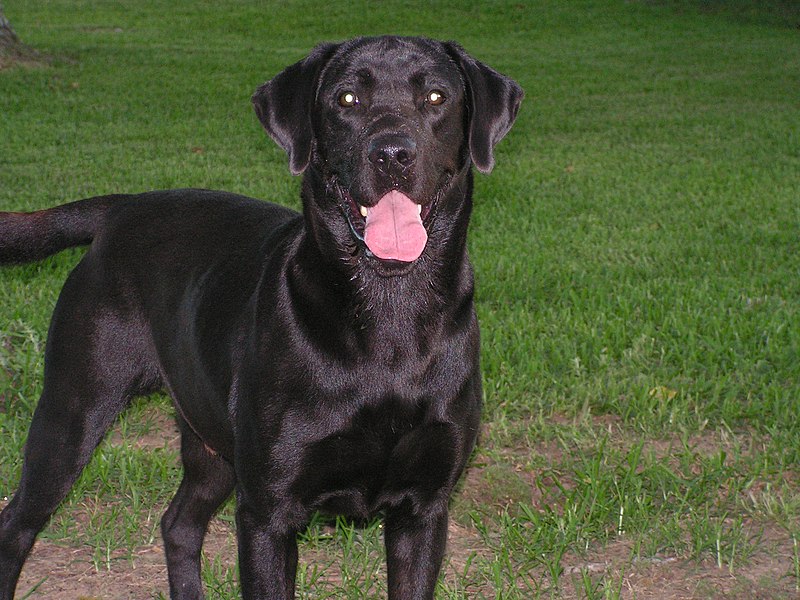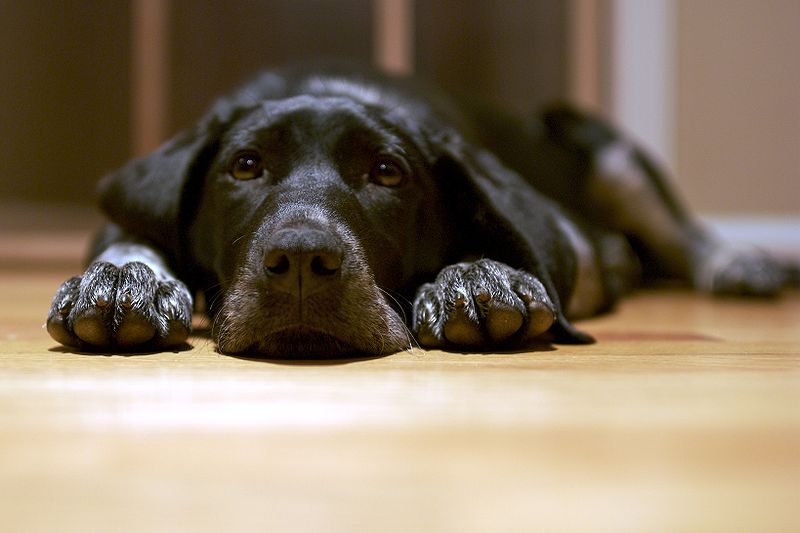 “In speaking of his intelligence, my wife, who at heart was not a little tinctured with superstition, made frequent allusion to the ancient popular notion, which regarded all black cats as witches in disguise.”
“In speaking of his intelligence, my wife, who at heart was not a little tinctured with superstition, made frequent allusion to the ancient popular notion, which regarded all black cats as witches in disguise.”
– Edgar Allan Poe, “The Black Cat”
Have you ever visited a pet shelter or rescue and noticed that their resident pets were mostly dark in color? It probably wasn’t your imagination. The idea that black dogs and other dark colored pets remain in shelters longer, and are more often euthanized than pets of other colors, is debated by some. But people who volunteer, work in or run animal shelters can tell you that the seeming discrimination against black animals is a reality. The condition has been given a name–Black Dog Syndrome. Despite the gentle and loving personalities thes pets may have they are often passed over for others in the shelter, but why? Having known and lived with several inky-black cats and dogs, I can attest that each was as affectionate and sweet as their yellow, white, tan, brown or grey counterparts, maybe even more so. In fact, their satiny, glossy black coat may have even made them more appealing to me. So what causes these pets to be passed overin a shelter situation?
Breaking a Bad Reputation
 You may say thay you have nothing against black dogs or cats, but your subconscience may say otherwise. For centuries, black animals have been given a bad wrap. When you see a black cat, how often does your mind say “bad luck” or associate that animal with something evil? You may not mean for it to happen, but we’re exposed to this stigma in everything from folklore and literature to movies and labels. These negative associations are still very prevalent in some cultures and continue to carry influence into the 21st century.
You may say thay you have nothing against black dogs or cats, but your subconscience may say otherwise. For centuries, black animals have been given a bad wrap. When you see a black cat, how often does your mind say “bad luck” or associate that animal with something evil? You may not mean for it to happen, but we’re exposed to this stigma in everything from folklore and literature to movies and labels. These negative associations are still very prevalent in some cultures and continue to carry influence into the 21st century.
It all started hundreds, maybe thousands of years ago, in ancient folk tales depicting black dogs as apparitions or embodiments of devils, harbingers of death and destruction, guardians of the underworld or malevolent instuments of dark magic. Black Cats were also considered bad omens, bringers of bad luck, and otherwise associated with evil and sorcery. Fear of and discrimination against these animals was rampant, across Europe in particular. It wasn’t uncommon for black cats to be captured and slaughtered for fear that they were part of a greater evil.
More modern literature perpetuated the negative portrayal of the unsuspecting animals. Winston Churchill called his depression the Black Dog, a personification still used today in mental health fields. Who could forget Sir Arthur Conan Doyle’s tale The Hound of the Baskervilles or Poe’s work The Black Cat? Movies, television and other media are just as much to blame casting dark animals as familiars and other aggressive or evil characters. Perhaps if these animals were more often portrayed in positive roles they could be embraced by more potential adoptive families.
In Search of Extraordinary
As the saying goes, you shouldn’t judge a book by its cover. Unfortunately, it may be that to many people looking for a new pet, black animals are just too ordinary. They look for an animal that catches their eye. Black animals in poorly lit shelter kennels may fade into the crowd, being passed over for more  colorful or striking animals. In a cage, it’s hard to see how extraordinary these animals may be and how wonderfully they may interact with you and your family. Searching online for new pets can be equally misleading or detrimental. Despite technological advances, black animals don’t tend to photograph well, so their online profiles may also become ‘invisible’ to people who are casually paging through listings. Some shelters highlight black dogs in their kennels using bright blankets, beds, bandanas and other accessories to help them the pets to be more eye-catching.
colorful or striking animals. In a cage, it’s hard to see how extraordinary these animals may be and how wonderfully they may interact with you and your family. Searching online for new pets can be equally misleading or detrimental. Despite technological advances, black animals don’t tend to photograph well, so their online profiles may also become ‘invisible’ to people who are casually paging through listings. Some shelters highlight black dogs in their kennels using bright blankets, beds, bandanas and other accessories to help them the pets to be more eye-catching.
Please take a closer look at the pets at your local shelter, black ones included, as they may already have been cast aside as unsuspecting victims of Black Dog Syndrome. When you visit, one of the most important things you can do is interact with as many potential pets as possible. You’re looking for a pet that is the right fit for your situation, and animal that will hopefully be part of your family for the rest of it’s life. No matter what color or breed, your pet’s personality and how you, and your family relate to it is the most important aspect of the process.
Thanks,
Patty
Black Dog on floor image referenced from wikipedia and originally posted by Droid
Black Kitten image referenced from wikipedia and originally posted by Alvesgaspar
 That Pet Blog That Pet Place Pet Blog
That Pet Blog That Pet Place Pet Blog
